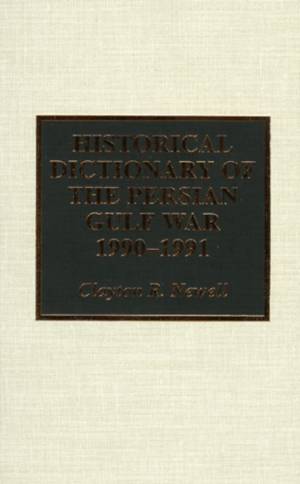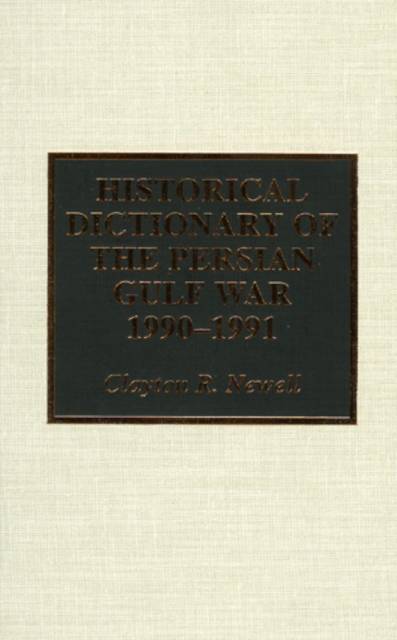
- Retrait gratuit dans votre magasin Club
- 7.000.000 titres dans notre catalogue
- Payer en toute sécurité
- Toujours un magasin près de chez vous
- Retrait gratuit dans votre magasin Club
- 7.000.0000 titres dans notre catalogue
- Payer en toute sécurité
- Toujours un magasin près de chez vous
Description
Contrary to many assessments that immediately followed the end of the 1991 Persian Gulf War, that war was neither short nor decisive. The brief war in 1991 was the dramatic manifestation of long-standing antagonisms among the principal participants, and its results continue to have a profound effect on the region. It is therefore important to determine, on the diplomatic side, just how the war got started, how it was fought, and whether the dramatic ground campaign should have exceeded a hundred hours to bring about a more decisive conclusion. With the seemingly endless follow-up to the war continuing to be much messier than the run-up, the Historical Dictionary of the Persian Gulf War draws together the results of assessments of the war by a multitude of commentators. It presents the information in concise and informative entries on many of the significant civilian and military persons, crucial diplomatic and political actions, as well as the essential military aspects. Entries include the strategy and tactics, the encounters and battles, and the forces and weapons deployed by both sides. An introduction gives the background to the war, a summary of the significant events, and an assessment of the immediate results of the fighting. The detailed chronology provides a historical perspective and follows the effects the war continues to have on relations among the primary players. A list of abbreviations deciphers the acronyms for weapons, organizations, and insider jargon that can sometimes overwhelm even the most knowledgeable readers. Includes a comprehensive bibliography which covers the rapidly growing and already substantial literature on the war.
Spécifications
Parties prenantes
- Auteur(s) :
- Editeur:
Contenu
- Nombre de pages :
- 424
- Langue:
- Anglais
- Collection :
- Tome:
- n° 9
Caractéristiques
- EAN:
- 9780810835115
- Date de parution :
- 22-10-98
- Format:
- Livre relié
- Format numérique:
- Genaaid
- Dimensions :
- 147 mm x 224 mm
- Poids :
- 607 g

Les avis
Nous publions uniquement les avis qui respectent les conditions requises. Consultez nos conditions pour les avis.






